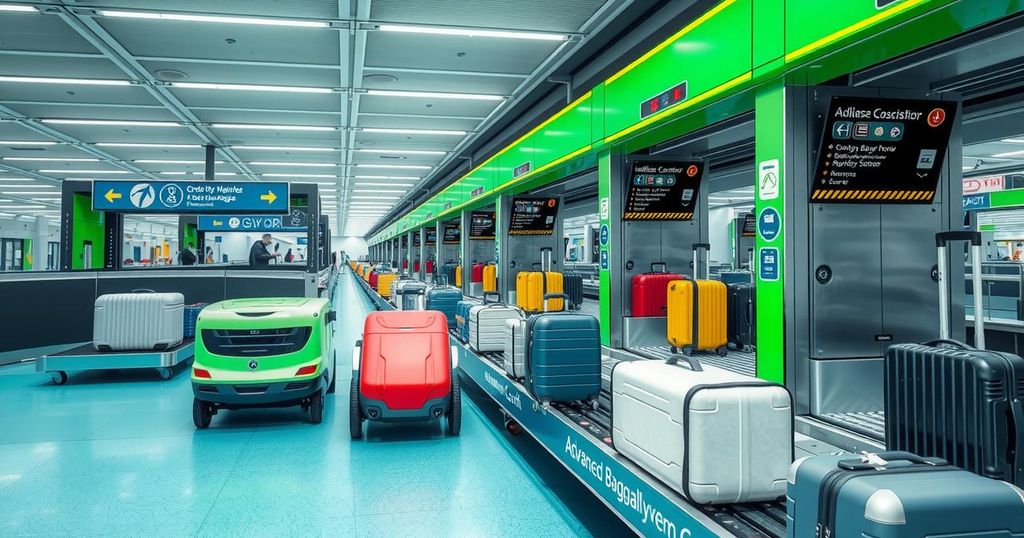Innovative Baggage Trends Reshaping the Aviation Industry
This article delves into the emerging baggage trends in aviation, highlighting how automation, technology integration, and sustainability are transforming airport operations. Key issues include rising mishandling rates, staff shortages, the shift towards more carry-on luggage, and innovative solutions like baggage biometrics and tracking technologies. The focus on enhancing passenger experience and environmental responsibility underscores the ongoing evolution within the industry.
The landscape of aviation is significantly influenced by notable baggage trends, resonating with a need for efficiency, security, and customer satisfaction. A recent surge in global mishandling rates, reaching 7.6 bags per thousand passengers in 2022—up 74.7% from 2021—highlights an ongoing challenge in the industry despite a historical improvement of 63% since 2007. With projections suggesting a rise in passenger numbers, the baggage sector stands at a crossroads, demanding modernization and strategic investments.
Staff shortages exacerbate existing issues in baggage handling, a ripple effect caused by the pandemic, layoffs, and a challenging hiring landscape. As air travel demand soars, many airports face operational setbacks, manifesting in longer wait times and increased mishandling of luggage. To combat this, collaboration between airlines and airports is crucial, focusing on competitive pay, thorough training, and technology to enhance job satisfaction.
In tandem with these challenges is the growing trend of increased carry-on luggage. Passengers often opt to travel light to save on fees and avoid long waits at carousels, creating congestion in airports. This phenomenon can delay flights, as cabin crew manage an influx of bags, highlighting the downside of reduced checked luggage.
Innovative solutions such as baggage biometrics are emerging. High-resolution cameras create unique identities for checked bags, aiding in identification and reducing mishandling. Automation also rolls into the industry; robotic systems streamline sorting and loading, as seen with British Airways’ Auto-DollyTugs at Gatwick.
Tracking technology has become essential for ensuring accountability within baggage handling, following IATA’s mandatory tracking resolutions. RFID and Bluetooth tech allow real-time monitoring of luggage, providing peace of mind for travelers and significantly reducing the rate of mishandled bags.
Artificial intelligence is enhancing the ability to predict baggage flow and improve resource allocation, while smart security measures, including CT scanning, are redefining screening processes, making them quicker and more comprehensive. Airports are increasingly adopting self-service kiosks for bag drop, streamlining the check-in process, which frees personnel for other essential tasks.
Mobile applications now play a pivotal role in baggage management, offering real-time updates and enabling passengers to track their bags throughout their journey. Initiatives for sustainability are gaining traction, as airports explore eco-friendly practices in baggage handling to contribute to environmental preservation.
With the baggage handling domain evolving through technology, customer focus, and operational efficiency, passengers can anticipate an era marked by enhanced travel experiences, increased security, and more environmentally conscious practices in the years to come.
The evolution of baggage handling in aviation is reshaping the industry’s landscape, driven by technology, consumer expectations, and sustainability. While challenges such as staff shortages and increased carry-on luggage persist, innovation through automation, AI, and tracking technologies offers pathways to improved service. As airports embrace these trends, travelers can look forward to smoother experiences, heightened security, and a commitment to eco-friendly practices.
Original Source: www.internationalairportreview.com




Post Comment